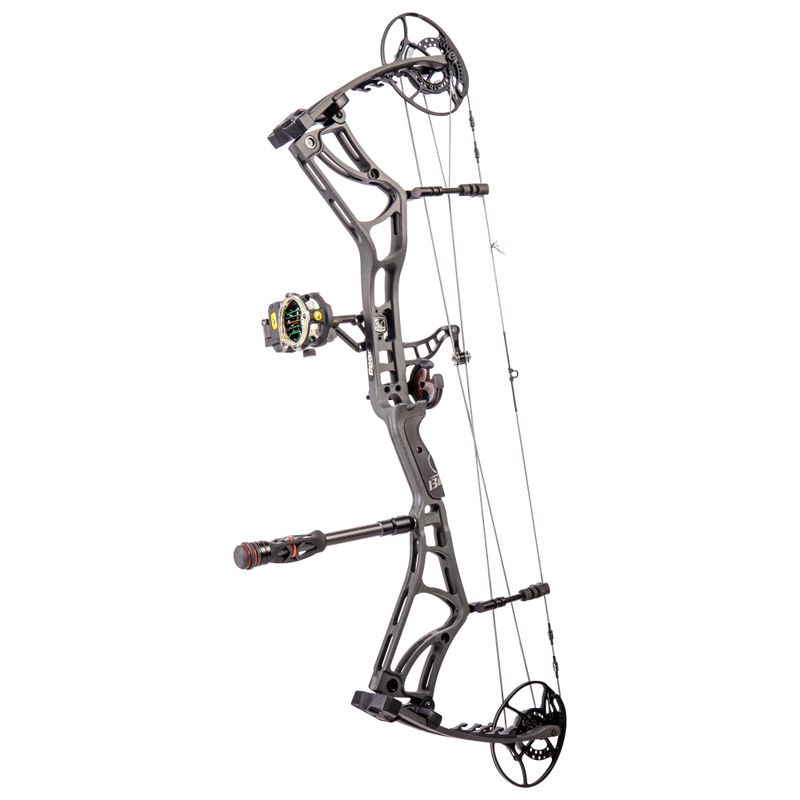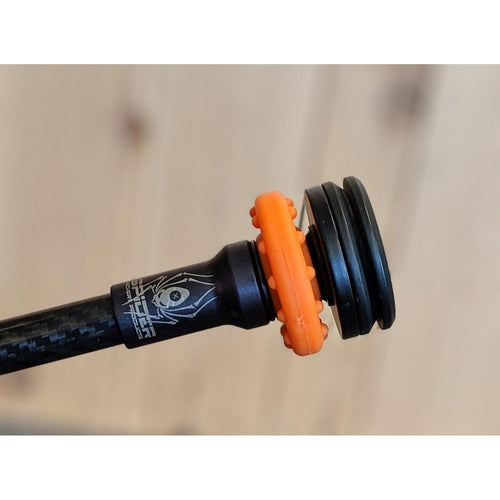Achieve Stability in Your Shot: Recognizing Archery Stabilizers
Achieve Stability in Your Shot: Recognizing Archery Stabilizers
Blog Article
Maximize Your Archery Performance With the Perfect Stabilizer: a Detailed Buyer's Overview
Archery lovers know the importance of having the right devices to improve their efficiency. While arrows and bows may steal the limelight, an essential piece of gear that frequently goes ignored is the stabilizer. A stabilizer can substantially impact your shooting precision and stability, however finding the ideal one can be a difficult job. In this detailed purchaser's guide, we will check out the various sorts of stabilizers, crucial aspects to take into consideration, the significance of proper size and weight, choosing the ideal damping system, and maintenance ideas. Whether you're a skilled archer or simply beginning, this overview will aid you browse the world of stabilizers and maximize your archery efficiency.
Sorts Of Stabilizers
There are 3 primary sorts of stabilizers generally used in archery efficiency. These stabilizers play an essential role in boosting accuracy and decreasing bow torque. The very first kind is the lengthy rod stabilizer. Long rod stabilizers are commonly connected to the front of the bow and extend in an outward direction. They supply equilibrium and security throughout the shot, reducing any unneeded activity. Lengthy pole stabilizers are especially effective in reducing bow torque, enabling a much more regular and steady release.
The 2nd kind of stabilizer is the side pole stabilizer. Side rod stabilizers are attached to the side of the bow and assistance counterbalance any kind of side activities.
The third kind of stabilizer is the V-bar stabilizer. V-bar stabilizers are commonly made use of in combination with side pole stabilizers to additionally improve security.
When picking the appropriate tools to maximize archery efficiency,Understanding the various types of stabilizers is vital. Each stabilizer kind offers a particular objective, and choosing the appropriate mix can dramatically enhance precision and consistency on the variety or in the field.
Trick Variables to Think About

First and primary, it is vital to consider the length and weight of the stabilizer. Longer stabilizers give enhanced stability and balance, while shorter ones use even more ability to move. The weight of the stabilizer influences the total balance of the bow, and it is very important to find a stabilizer that enhances the weight of your bow.
One more critical aspect to consider is the material of the stabilizer. Stabilizers are typically made from aluminum, carbon, or a mix of both. Light weight aluminum stabilizers are long lasting and give excellent vibration dampening, while carbon stabilizers are lightweight and deal remarkable vibration absorption.
Additionally, it is very important to review the layout and adjustability of the stabilizer. Some stabilizers include flexible weights and dampeners, allowing you to personalize the balance and resonance control. In addition, considering the mounting choices and compatibility with your bow is necessary to guarantee a protected and correct fit.
Finally, budget is a significant factor to take into consideration. Stabilizers can be found in an array of costs, and it is essential to find one that fits within your budget plan while still meeting your efficiency needs.
Significance of Correct Length and Weight

Correct length and weight are vital factors that dramatically affect the performance of an archery stabilizer. It is important to think about the shooting design, target range, and individual choice when selecting the size of a stabilizer.
Similarly, the weight of the stabilizer plays a vital function in accomplishing ideal efficiency. A much heavier stabilizer soaks up extra resonance and decreases bow motion throughout the shot, resulting in a steadier goal and tighter teams.
Additionally, the size and weight of the stabilizer must be compatible with the archer's physical toughness and shooting technique. By selecting the best length and weight, archers can optimize their security, lower bow torque, enhance precision, and enhance overall performance. It is suggested to seek this article advice from seasoned archers or experts to make sure the most effective match in between the stabilizer and individual capturing requirements.
Choosing the Right Damping System
The choice of a proper damping system is critical in optimizing the performance of an archery stabilizer. A damping system is designed to lower the resonances and noise produced when an arrowhead is released, giving the archer with a more accurate and steady shot. There are numerous variables to think about when selecting the appropriate damping system for your stabilizer.
Firstly, it is necessary to think about the kind of product utilized in additional reading the damping system. Rubber and rubber-like materials are typically utilized because of their capability to absorb resonance efficiently. These products are light-weight and likewise resilient, making them suitable for archery stabilizers.
Secondly, the style of the damping system must be thought about (archery stabilizer). Try to find a system that uses numerous get in touch with points with the stabilizer, as this will certainly disperse the vibrations more uniformly and even more boost the stabilizer's performance
Additionally, take into consideration the adjustability of the damping system. Being able to tweak the level of damping can be beneficial, as different archers may have differing preferences and shooting styles.
Finally, it is essential to make sure that the picked damping system works with your stabilizer. Check the measurements and specs to make sure a correct fit.
Upkeep and Care Tips
To ensure optimal performance and longevity of your archery stabilizer, it is necessary to apply correct upkeep and care methods. Normal upkeep not just prevents wear and tear yet also helps identify any type of possible issues prior to they end up being major troubles. Among the initial steps in keeping your stabilizer is to clean it on a regular basis. Use a soft cloth or brush to remove dust, dirt, and debris from the stabilizer and its parts. Pay unique focus to the weight system, as dust can collect in the strings and influence its capability. Furthermore, inspect all the parts of the stabilizer for any kind of indications of damages or wear, such as fractures or loosened screws. It is critical to address them without delay to prevent more damage if any type of issues are spotted. content Oiling the moving parts of the stabilizer, such as the dampers and weight system, is additionally vital to make sure smooth operation. Make use of a high-quality lubricating substance suggested by the manufacturer and comply with the instructions given. Lastly, shop your stabilizer in an amazing, dry location away from direct sunshine and extreme temperature levels to stop warping or various other damage. By complying with these upkeep and care suggestions, you can make the most of the performance and durability of your archery stabilizer.
Verdict
In final thought, picking the best stabilizer for archery is important for maximizing performance. With the ideal stabilizer and proper focus to these aspects, archers can improve their total archery experience.
The 2nd type of stabilizer is the side rod stabilizer.The 3rd kind of stabilizer is the V-bar stabilizer. V-bar stabilizers are generally utilized in conjunction with side pole stabilizers to additionally improve stability. The weight of the stabilizer affects the general equilibrium of the bow, and it is essential to find a stabilizer that complements the weight of your bow.
Aluminum stabilizers are durable and offer outstanding resonance moistening, while carbon stabilizers are lightweight and offer remarkable resonance absorption.
Report this page